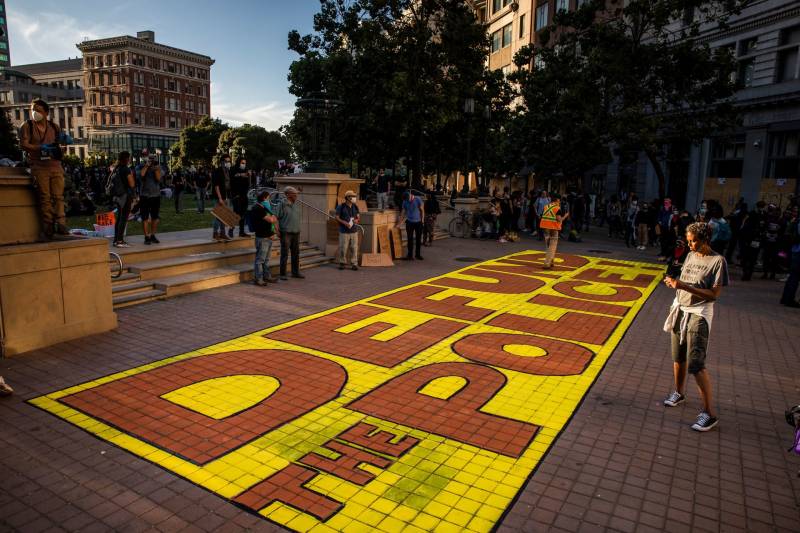The newly approved George Floyd Resolution to Eliminate the Oakland Schools Police Department directs Superintendent Kyla Johnson-Trammell to launch “an inclusive, community-driven process” for developing a new district safety plan by Aug. 21.
The resolution explicitly calls for parents, students, teachers, administrators, the Black Organizing Project and others to be included in the process. Advocates say holding district leaders to that will require steady demands for transparency — something the district’s often been criticized for lacking.
For guidance on how an alternative approach to school safety might work, BOP has looked to the work of organizers in Canada, who successfully ousted armed police from Toronto schools in 2017.
Speaking at Thursday’s press conference, organizer Andrea Vasquez Jimenez of Latinx, Afro-Latin-America, Abya Yala Education Network, who helped lead the Toronto effort, warned against recreating a similar policing system through different means, such as contracts with law enforcement, technological surveillance or security personnel with police-like roles.
Vasquez Jimenez described the Toronto process as a community-guided redistribution of school resources that led to more support staff and programs for students, in addition to policy changes — like limiting the kinds of offenses deemed suspendable, and the hiring of community advocates into leadership positions within the district.
“Community wants to be there,” she said. “What we need are educational spaces to open their arms and say, ‘We need you community.'”
She cited data from the Toronto District School Board that show suspensions in the 2018 school year dropped 24% compared to the 2016 school year, the last year student resource officers were on campus. Expulsions dropped 53% over that same period.
The data show a modest decrease in the percentage of all suspensions and expulsions of Black students, from 36.2% to 33.0%. Black students make up about 11 % of district students.
In voting to lay off all 67 employees of the Oakland School Police Department, including its 10 sworn officers, the board agreed it could funnel those savings towards student support services like counselors and academic mentors. The board’s decision also directs the district to put in place annual implicit bias and anti-racism training for all staff — and in a last-minute addition, for school board members themselves.
Wednesday’s resolution draws in part on a 2019 Black Organizing Project plan for police-free schools, which calls for moving the safety program to the equity or behavioral health departments and investing more money in mental health and special education staff, plus restorative justice programs. The plan would replace school security officers with “peacekeepers” or “school climate specialists” trained in de-escalation and trauma-informed approaches.
The schools police department chief Jeff Godown has expressed support for the board’s vote, and his input may help guide the alternative safety plan development. Earlier this year, Superintendent Johnson-Trammell tasked Godown with coming up with guidelines for how the district could function without officers in schools. Last month, the school board also hired Georgetown Law’s Innovative Policing Project to develop recommendations. That report, due in the fall, will likely also shape the safety plan.

